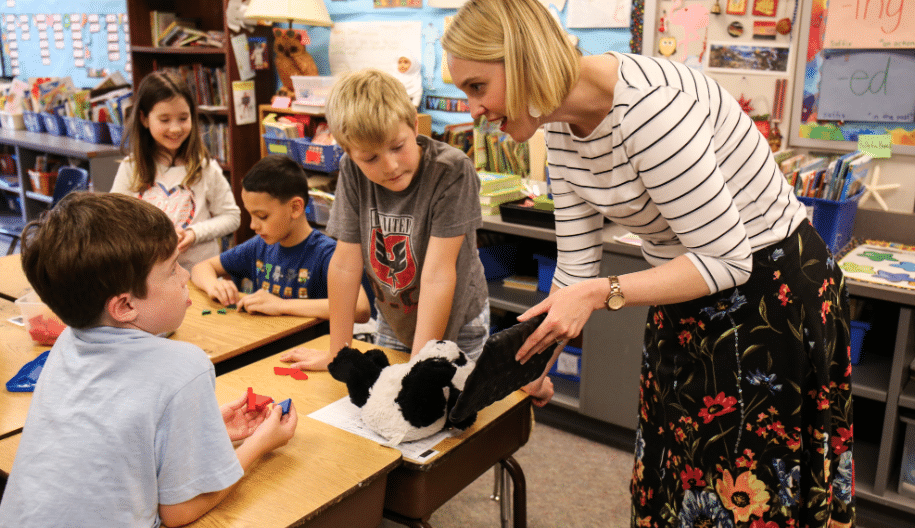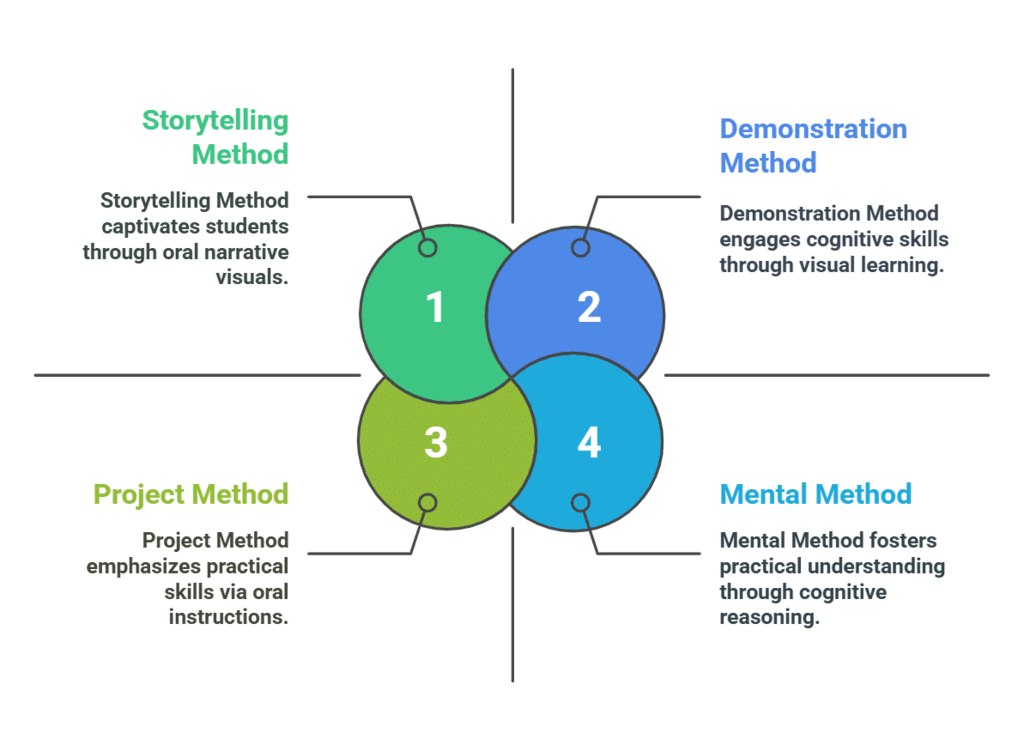Notes: Methods of Teaching | Child Development and Pedagogy for CTET Preparation - CTET & State TET PDF Download
| Table of contents |

|
| Definitions of Teaching |

|
| Teaching Skills |

|
| Teaching-Learning Process |

|
| Methods of Teaching and Learning |

|
| Strategy of Teaching |

|
| Micro Teaching |

|
Teaching is a structured process aimed at fostering behavioral changes in students by influencing their thoughts, emotions, and actions. It goes beyond knowledge transmission to include character building, critical thinking, and creativity. Effective teaching requires strong communication, continuous assessment, and adaptability to different learning styles. Educators act as mentors, guiding students toward intellectual curiosity, ethical values, and problem-solving skills. A well-structured teaching process ensures students acquire knowledge and apply it in real-life situations, making them well-rounded contributors to society.
Definitions of Teaching
Various scholars have defined teaching in different ways:
Edmund Amidon: "Teaching is an interactive process, primarily classroom talk, that takes place between teachers and students during specific activities."
H.C. Morrison: "Teaching is a close interaction between a more mature personality and a less mature one, intended to enhance the education of the latter."
Clarke: "Teaching consists of activities designed to bring about changes in students' behavior."
Teaching Skills
A great teacher leaves a lasting impact on students, inspiring them to achieve excellence. According to N.L. Gaze, "Teaching skills are specific instructional techniques and strategies used by a teacher in the classroom to enhance learning."

Some essential teaching skills include:
Stimulus Variation
Set Induction
Closure
Silence and Non-verbal Cues
Reinforcement
Asking Questions
Probing Questions
Divergent Questions
Higher-Order Questions
Attending Behavior
Illustrating Concepts
Lecturing Effectively
Planned Repetition
Ensuring Completeness in Communication
Teaching-Learning Process
Teaching is an interactive engagement between teachers and students, aimed at developing cognitive skills and bringing about behavioral changes, which is referred to as 'learning' in educational psychology. Since learning is a continuous process, teaching and learning are two interconnected aspects of education.
Principles of the Teaching-Learning Process
Educational psychologists have outlined several principles that enhance the effectiveness of teaching and learning:
- Definite Purpose: Teaching should be guided by clear objectives, categorized into general and specific aims, aligning with the subject matter and learning goals.
- Correlation: This principle emphasizes using an inductive-deductive approach to teaching, ensuring strong conceptual connections that facilitate deep and lasting learning.
- Motivation: Motivation plays a crucial role in student development and can be classified as:
1. Intrinsic Motivation: Driven by internal curiosity and self-satisfaction.
2. Extrinsic Motivation: Influenced by external factors, such as the teacher’s encouragement and classroom environment. - Reinforcement: Based on B.F. Skinner’s behavioral theory, reinforcement strengthens learning. It is divided into:
1. Positive Reinforcement: Rewarding desired behaviors to encourage repetition.
2. Negative Reinforcement: Removing unfavorable stimuli to promote better behavior. - Stimulation: Encouraging student engagement through factors like a stimulating learning environment, personal interests, effective teaching methods, and the use of innovative learning materials.
- Revision and Practice: The principle "Practice makes perfect" highlights the need for regular revision and exercises to reinforce learning. This process helps assess both student understanding and the effectiveness of teaching methodologies.
Methods of Teaching and Learning
Methods of teaching should be followed according to the subject matter and tact of the teacher. There are four methods of teaching which present the subject matter:
- Telling method: The telling method covers all the aspects of teaching which are delivered orally to the students during the teaching-learning process. This method covers the lecture Method, Discussion Method, storytelling Method, and so on.
- Project Method: This method covers learning by doing aspects of the subject matter in the teaching-learning process. This method covers the project method, problem-solving method, textbook method, etc.
- Visual Method: This method covers the seeing aspect of the subject matter in the teaching-learning process. It includes a demonstration method, supervised study method, etc.
- Mental Method: This method covers the cognitive aspects of the subject matter. Inductive, deductive, analysis, synthesis methods are included in this method.

Strategy of Teaching
In warfare, strategy involves the deliberate planning and coordination of resources and tactics to secure victory. Similarly, in education, a teaching strategy refers to a well-organized set of instructional methods and techniques that enable teachers to effectively accomplish learning objectives in the classroom.
Types of Teaching Strategies:
Teaching strategies are of two types i.e., Autocratic teaching strategy and Democratic teaching strategy.
A) Autocratic Teaching Strategy:
This strategy uses traditional methods of teaching. In this method, the teacher has full control over teaching, and students are not allowed to act freely. This strategy is of four types:
- Storytelling method: Under this method teacher delivers the content in a story form to the students. This method increases the vocabulary of the student and enhances their vocabulary. This method is useful in teaching languages and social studies.
- Lecture method: The lecture method is the oldest and one-way communication method of teaching and is helpful in developing the cognitive and affective domains of the child. This method is suitable for introducing a new lesson and lays emphasis on presentation.
- Demonstration method: This method is useful in teaching a practical subject where the content can be understood by only showing.
- Tutorial Method: Under this method, a class is divided into groups according to the capacities of students. Each group is handled by different teachers. In this method absence of previous knowledge of students should be covered and every child should get the chance to express himself/herself individually. This method is a type of remedial teaching and can be suited in teaching natural science and mathematics subjects.
B) Democratic Teaching strategy:
Under this strategy, a child is free to express their views in front of the teacher and maximum interaction between teachers takes place. Here the teacher works as a guide or instructor. It helps in the all-around development of teachers and develops the effective as well as the cognitive domain of students. Six types of methods are covered under this strategy:
- Discussion Method: Under this method, an oral conversation about a topic takes place between students and teachers. The discussion method develops the thinking and communication power which results in the development of a higher level of the cognitive and affective domain. This method is suited to all subject teaching except maths, art, music, and dance.
- Heuristic method: Under this method, a teacher raises a problem in front of the student and also guides him. And then students solve the problem after gaining knowledge through self-study, self-learning, investigation, and research.
- Discovery method: under this method students find the solution to their problems from their own surrounding environment. He draws his own experience and prior knowledge in finding the solution to a problem. It is inquiry-based learning.
- Project method: Under this method, a project related to real-life experiences is assigned to students by making a group. Students learn and solve real-life problems with each other’s cooperation.
- Role-playing Method: Under this method roles are assigned to students and students are allowed to play those roles. This technique is an excellent tool for engaging students and develops higher-order thinking in students.
- Brainstorming Method : It is a creative method of teaching under which a number of ideas are generated for the solution of a specific problem. This method effectively uses brains to storm the problem.
Micro Teaching
Micro teaching is a specialized teacher training method introduced by Dwight W. Allen and his colleagues at Stanford University. According to Allen, "Micro teaching is a scaled-down teaching encounter in terms of class size and duration."
This approach is highly effective in developing teaching skills, boosting confidence, and exploring various instructional techniques. It also enables educators to practice delivering constructive feedback.
As a teacher preparation tool, micro teaching focuses on refining teaching behaviors and skills in a controlled environment, often supported by video recordings for self-assessment. Within a supportive setting of peers and mentors, teachers can experiment with brief teaching sessions and receive constructive feedback to improve their performance.
Principles of Micro Teaching
The core principles of micro teaching include:
Authentic Teaching Experience: It provides real classroom teaching exposure, though on a smaller scale.
Focus on a Single Skill: Each session concentrates on mastering one specific teaching skill at a time.
Controlled Environment: The process is structured to ensure controlled practice and systematic improvement.
Emphasis on Feedback: Constructive feedback plays a vital role in refining teaching techniques and enhancing effectiveness.
|
70 videos|154 docs|42 tests
|
FAQs on Notes: Methods of Teaching - Child Development and Pedagogy for CTET Preparation - CTET & State TET
| 1. What are the different methods of teaching and learning? |  |
| 2. How does the lecture method work in teaching and learning? |  |
| 3. What is the significance of the discussion method in teaching and learning? |  |
| 4. How does the audio-visual method enhance teaching and learning? |  |
| 5. What is the experimental method and how does it promote effective teaching and learning? |  |















